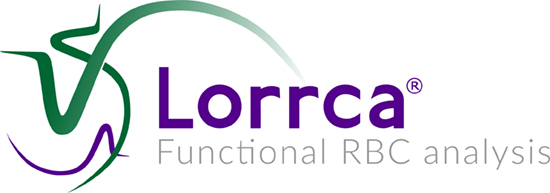Abstract;
24 January, 09:15 09:30
Paper
The Complexity of the Genotype-to-Phenotype Relation in Hereditary Spherocytosis: Data of a Cohort of 96 Patients.
Annelies van Vuren (1), Bert van der Zwaag (2), Rick Huisjes (3), Eduard van Beers (1), Nathalie Lak (4), Marije Bartels (5), Richard van Wijk (3)
(1) UMC Utrecht, Van Creveldkliniek, DIGD, Utrecht, (2) UMC Utrecht, Genome Diagnostics Department of Genetics, Utrecht, (3) UMC Utrecht, Department of Clinical Chemistry and Haematology, Utrecht, (4) Sanquin, Experimental Immunohematology, Amsterdam, (5) UMC Utrecht, Division of Pediatrics, Utrecht
No potential conflicts of interest
Introduction
Introduction Hereditary spherocytosis (HS) is a phenotypically and genetically heterogeneous disease. Until recently, establishing or confirming the diagnosis on DNA level was only rarely done. However, with the increased use of Next-Generation-Sequencing (NGS) techniques in the diagnosis of red blood cell disorders, the list of unique pathogenic mutations underlying HS is growing rapidly.
Aim To explore the genotype-to-phenotype correlation in a large cohort of HS patients.
Methods
Methods A retrospective analysis was performed on a cohort of 96 HS patients genotyped by targeted-NGS of 7 genes as part of routine diagnostics (UMC Utrecht, Utrecht, The Netherlands). Patients were categorized based on the underlying genetic defect, and phenotypic variability was investigated based on clinical and hematologic parameters.
Results
Main findings In 86/96 (90%) of patients a pathogenic mutation was identified, including 56 new pathogenic HS mutations. Mutations in SPTA1 were most frequently encountered in 32/96 (33%) patients, primarily in patients with autosomal recessive forms of HS, and 4 SPTA1 mutations were identified as autosomal dominant mutations. ANK1 mutations accounted for 23/96 (24%) and SPTB mutations for 17/96 (18%) of the HS cases, all showing an autosomal dominant inheritance pattern. Moderate or severe HS was more frequent observed in patients with SPTB or ANK1mutations, reflected by significantly lower hemoglobin concentrations and higher absolute reticulocyte counts. Hemoglobin levels were significantly lower in unsplenectomized HS patients withSPTB (10.5g/dL) or ANK1 mutations (10.8g/dL), compared to patients with SLC4A1 mutations (13.2g/dL). Absolute reticulocyte counts in unsplenectomized patients with SPTB (530×10^9/L) andANK1 (506×10^9/L) mutations were significantly higher than in patients with SPTA1 (289×10^9/L) and SLC4A1 (248×10^9/L) mutations. Interestingly, mutations positioned in the spectrin-association domains of ANK1, SPTA1 and SPTB resulted in a more severe phenotype. In addition, we observed a clear association between the clinical phenotype and different aspects of red blood cell deformability as determined by the Laser-assisted Optical Rotational Cell Analyzer (LoRRca MaxSis).
Conclusion
Conclusion Genotype-to-phenotype prediction in HS requires insight in the consequences of the pathogenic mutations for the assembly and dynamic interactions of the red blood cell cytoskeleton. We show furthermore that measurements of red blood cell deformability, which is a functional test, is clearly associated with HS phenotype.
